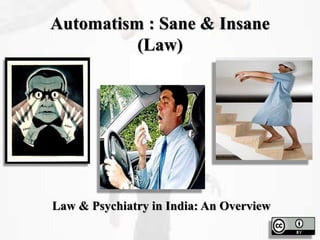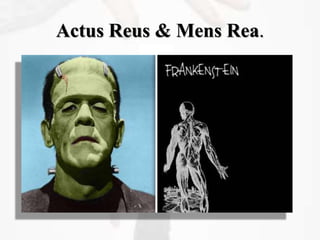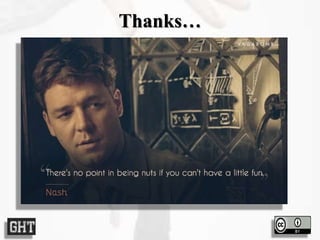The document discusses various types of automatism as a legal defense. It defines automatism as unconscious and involuntary behavior, where the defendant was unaware of their actions. It describes two categories of automatism - sane automatism and insane automatism. Sane automatism refers to unconscious behavior resulting from an external cause like epilepsy, sleepwalking, or head injuries. Insane automatism involves unconscious behavior caused by internal mental disorders like schizophrenia or bipolar disorder. The document provides examples of circumstances that could support automatism as a legal defense, such as sleepwalking or bee swarm attacks.











































































































